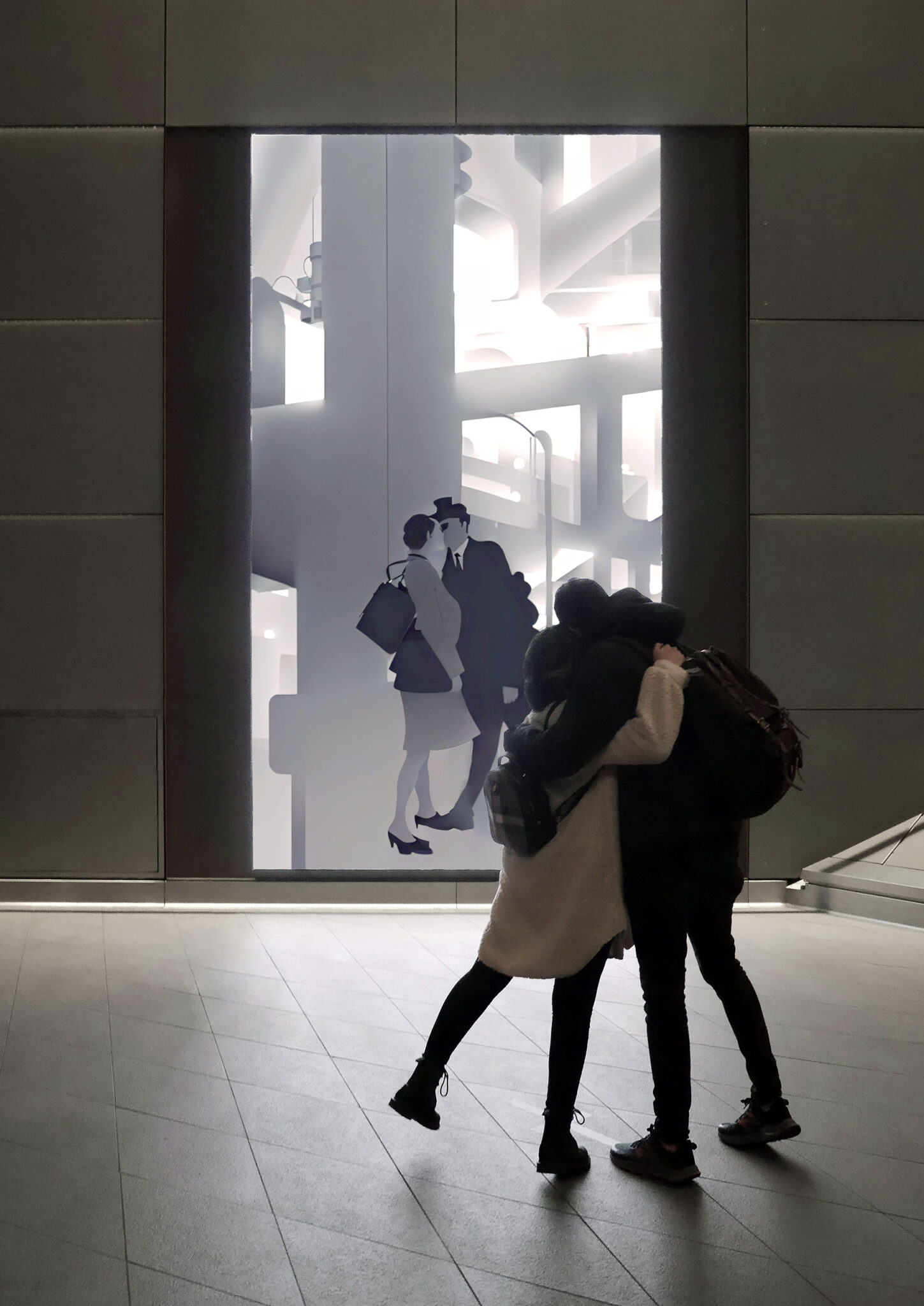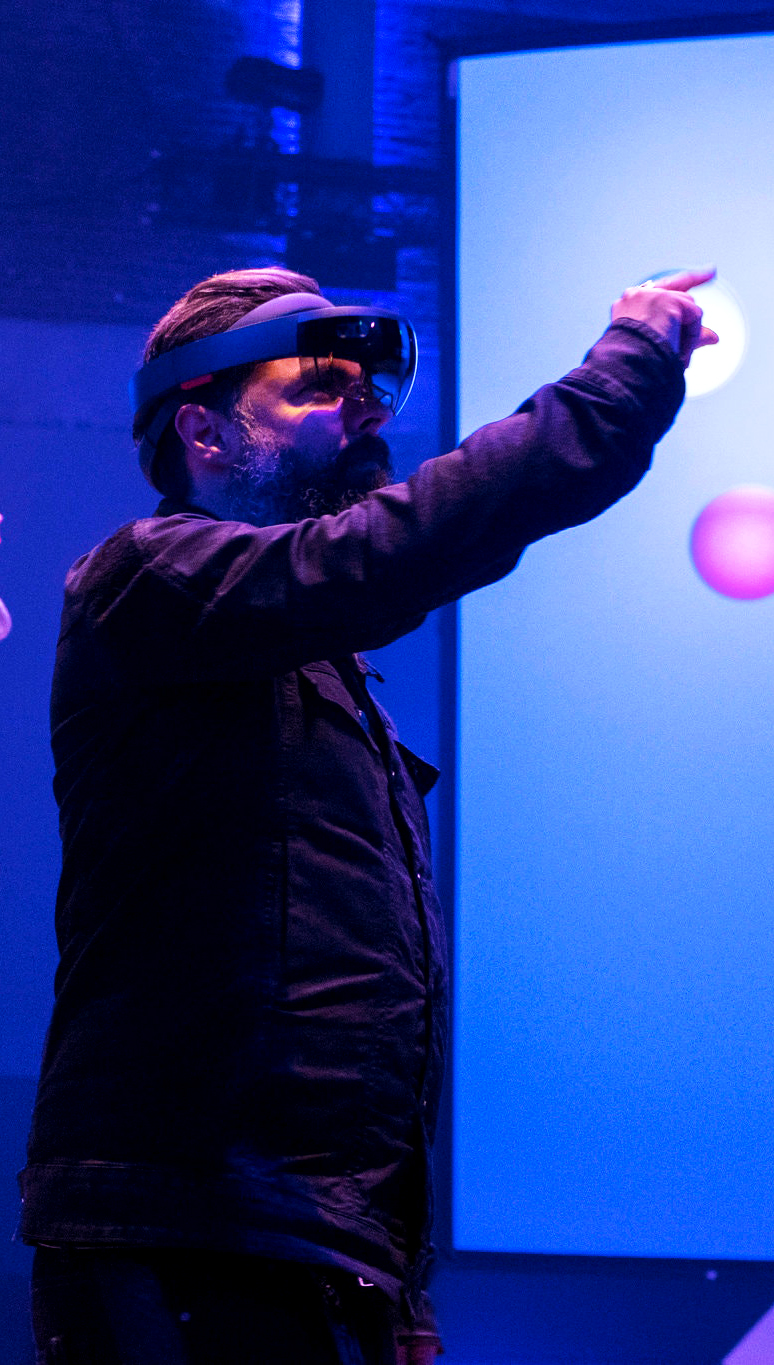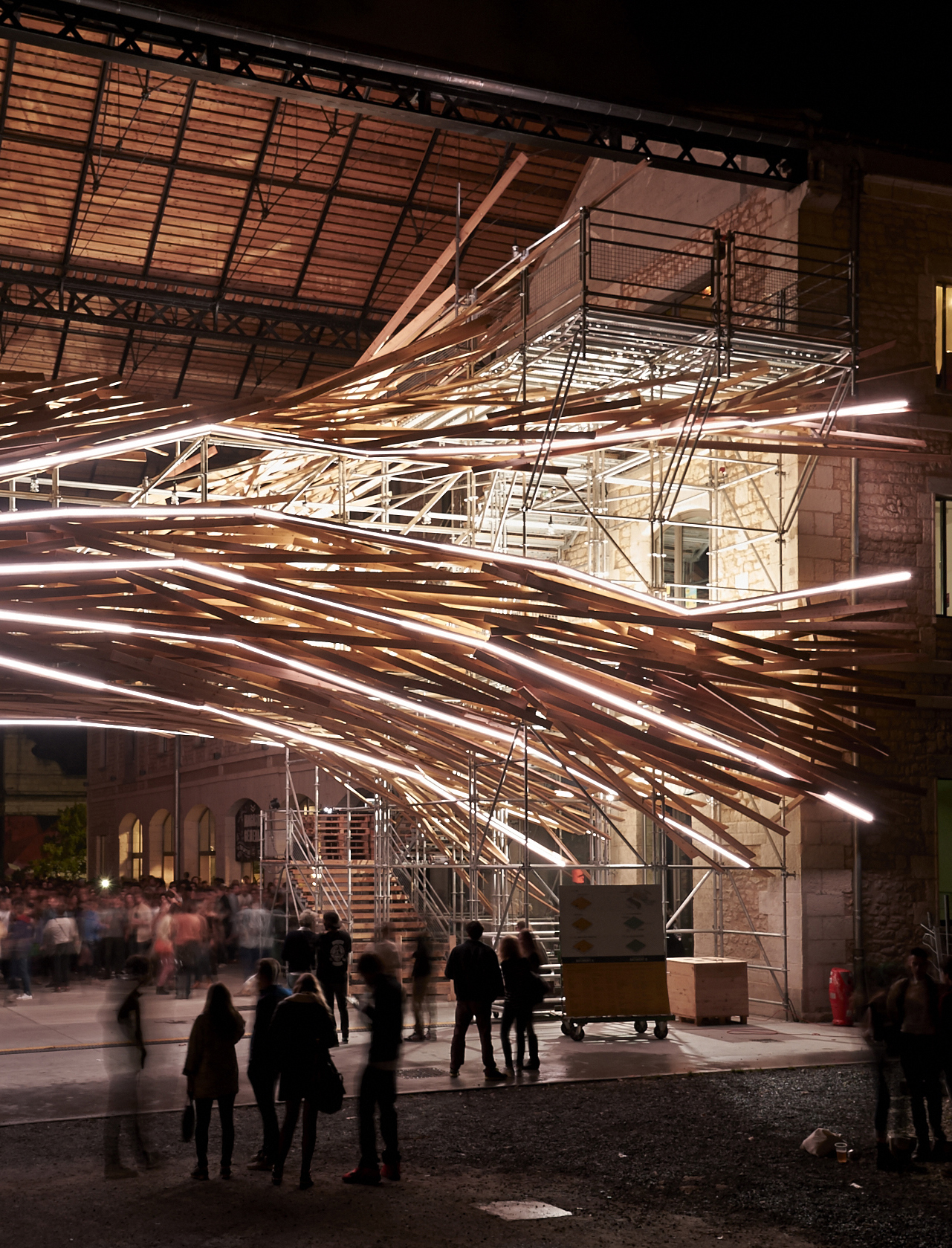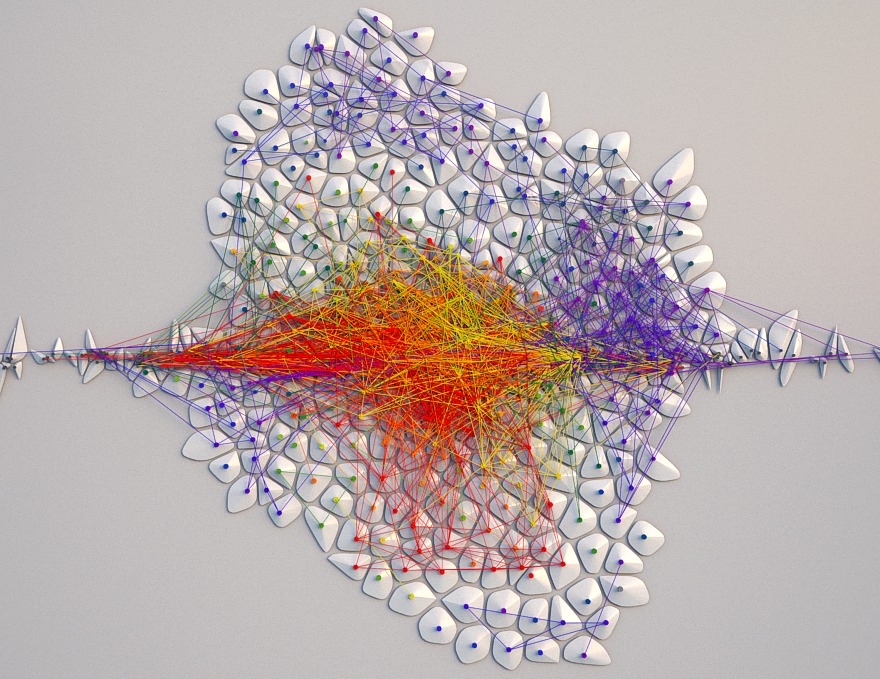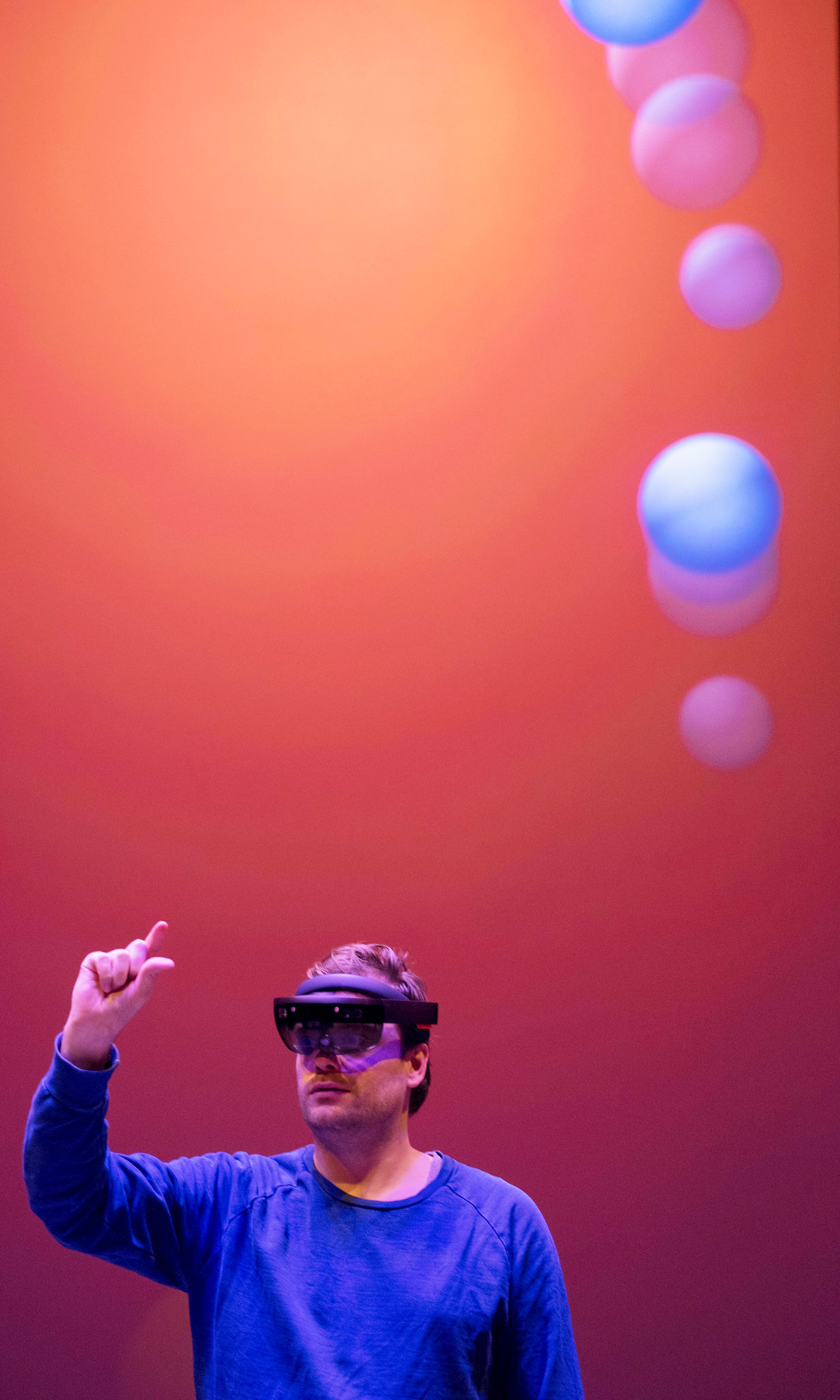
Brian Eno & Peter Chilvers
Bloom
Requiring no musical or technical ability, the egalitarian and user-friendly Bloom app enabled anyone of any age to create music, simply by touching the screen. Part instrument, part composition and part artwork, Bloom’s innovative controls allowed users to create elaborate patterns and unique melodies by simply tapping the screen. A generative music player took over when Bloom was left idle, creating an infinite selection of compositions and their accompanying visualizations. This version uses mixed reality with HoloLens.
